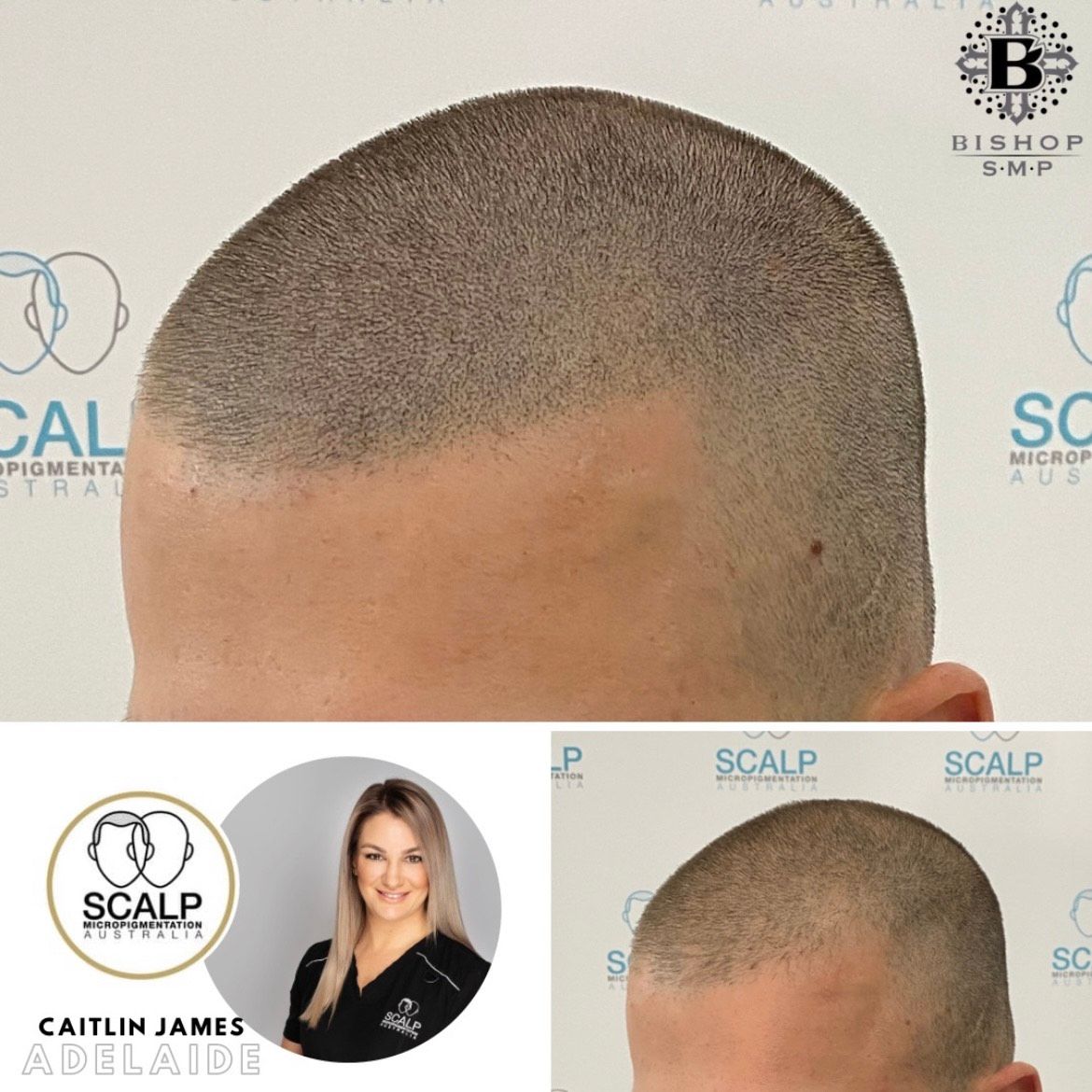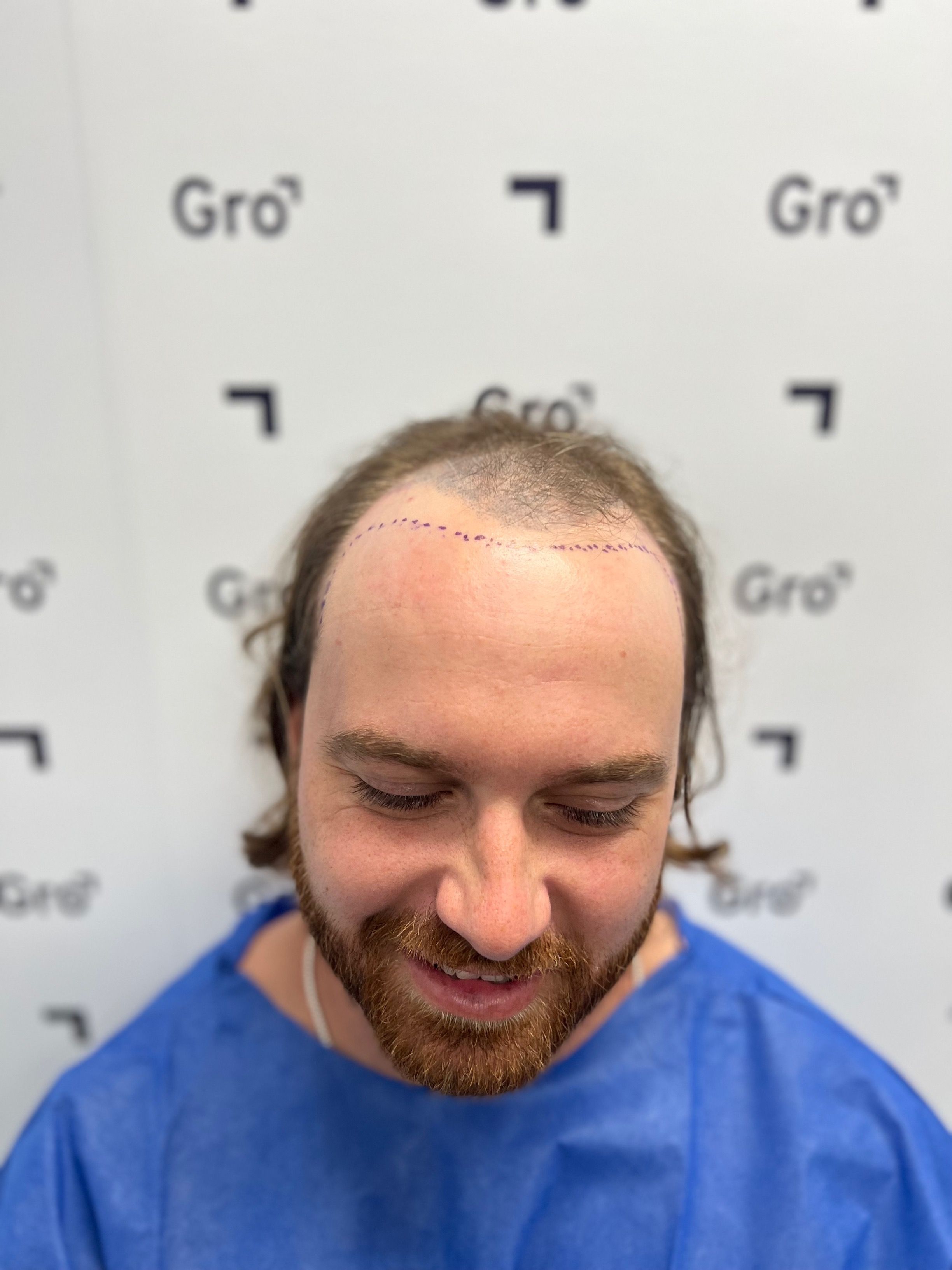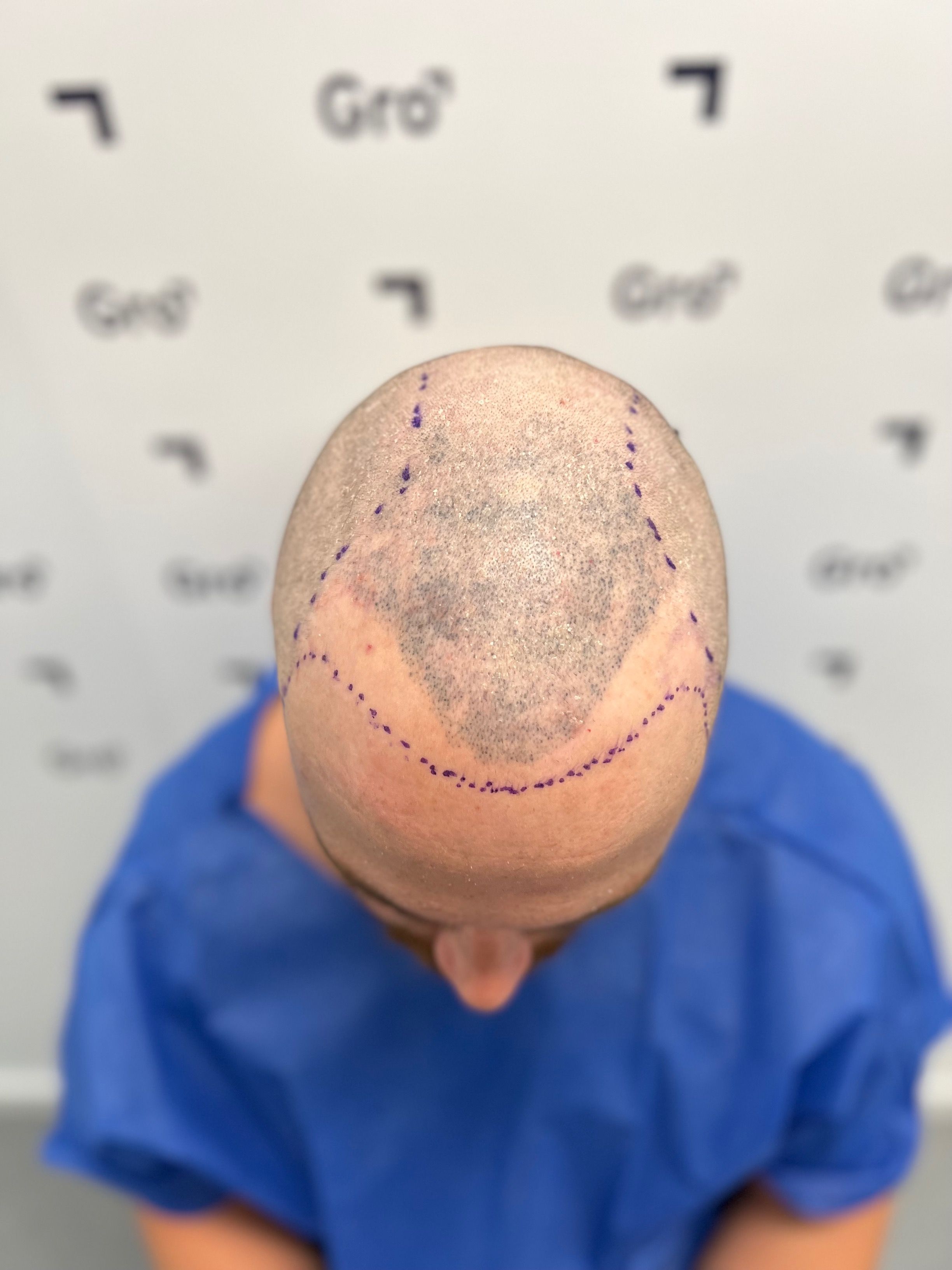What a time to be alive for those with hereditary hair loss! These days, there are many great options when it comes to tackling it. Two that have become increasingly popular and normalised due to their permanent nature are hair transplants and scalp micropigmentation (SMP).
We often get asked which one is the better solution. The answer depends on your priorities and how you want to be able to style your hair! The two are distinctly different: a hair transplant grows actual hair back on areas affected by hair loss, whereas SMP creates the illusion of hair growth and density with colour pigmentation on the scalp.
What many people don’t realise is that a hair transplant and SMP can work together perfectly to bring back a dense-looking head of natural hair, as long as you plan for it properly from the beginning.
To explain how to make the two solutions work together, we interviewed Caitlin James, one of Australia’s most experienced scalp micropigmentation artists.

How to successfully combine SMP and a hair transplant: Q&A with SMP artist Caitlin James
Caitlin James is a well-respected icon in the international SMP industry and the founder of Scalp Micropigmentation Australia. She’s an educator in scalp micropigmentation and a multi-award-winning international artist. With over eight years of experience in SMP, Caitlin is also a regular guest speaker and panellist at conferences in Australia and around the world.
Q: How can SMP benefit someone who’s already had a hair transplant?
A: We often get requests from people who have had a previous hair transplant to add scalp micropigmentation to their results to achieve the effect of more density. We see scalp micropigmentation as the ‘icing on the cake’ for a hair transplant result.
Scalp micropigmentation instantly creates the look of a fuller head of hair and makes a consistent base to help blend hair transplants into the natural area of hair.
By applying SMP nine months after a hair transplant, we allow the newly implanted hairs to be at full growth and thriving, with the local inflammation to the skin settled and the surrounding tissue returned to full strength before manipulating it again with scalp micropigmentation.
We achieve great colour retention by treating the transplant area only when the healing process is complete. For clients who have had a hair transplant but were limited by donor area and budget, or who may not be able to undergo multiple procedures to achieve a full effect, scalp micropigmentation can help add the effect of density.
Scalp micropigmentation may also soften the appearance of hairline transplants by adding density between the grafts. Hairline transplants can sometimes appear gappy due to the nature of the hair that was transplanted from the back of the scalp.
It can also improve the look of the hair transplant when the hair is wet, so the hair appears much thicker while exercising or swimming.
SMP is great at camouflaging FUE scarring for those who have larger procedures as well as camouflaging scarring from FUT transplants.
Q: If someone wants to get a hair transplant in the future, can they still get SMP?
A: Yes. The tattooing is placed very high up in the dermal papillary layer of the skin (0.7mm to 1.1mm), which is too shallow to create any scarring that would be detrimental to grafts being placed in the future. It doesn’t restrict any micro-circulation to the area which is important for new grafts to survive.
The benefits of choosing to do SMP first include:
- Applying the density effect first so the grafts appear thicker when they start growing at 3-4 months
- SMP can hide the diffused redness that some scalps hold post-transplantation
SMP can create a solid base for the transplant to be placed over, helping hide the redness that may be apparent for a few months following a transplant procedure.
In this scenario, the SMP can blur and fade slightly due to the increased white blood cells which aid in the transplant recovery. However, the benefits usually outweigh this risk, and a re-darkening of the SMP can be done nine months post-procedure.
Q: What do people need to keep in mind if they plan to get SMP before a future hair transplant?
A: The design has to be carefully considered as you need to make sure the doctor’s treatment plan will work with the scalp micropigmentation design. Meaning, there is enough donor hair available to completely cover, with enough density, the large scalp area of a low hairline created with SMP.
We would advise waiting until nine months after a transplant before applying SMP. The result will be better long-term as it won’t be manipulated by the hair transplant process, and it will be easier for a hair technician to plant grafts into bright, natural-coloured skin than skin that has SMP.
Listen to our Podcast episode with Jana and Shannon from another SMP provider, Pro Micro SMP.
To sum it up…
So basically, SMP and a hair transplant can be best buddies, especially for those who might have a bit less to work with in the donor area. The key to the best results, as always, is to be informed and plan for the best outcome from the beginning!
- Before going ahead with SMP first, it’s best to speak with a hair transplant specialist to assess your donor area. This way, the hairline created with SMP will be in line with what can be created with a hair transplant.
- If you’re getting a hair transplant before SMP, all good – just give it that nine months to heal before going ahead with SMP!


At Gro we often do hair transplants over existing SMP, such as this hair transplant for Austin Gosney.
Here at Gro, our team is focused on giving you honest advice on how to achieve the results that you want. If you’re considering SMP but might want a hair transplant in the future, book a chat with one of our specialists for personalised advice.
During your consultation, you get access to all the information about the procedure, including recommended hair count, where your new hairline would sit and what investment is required to achieve it.
Interested in seeing more hair growth journeys? Our Gro Diaries are the perfect way to showcase the real people and transformation our clients go through.













